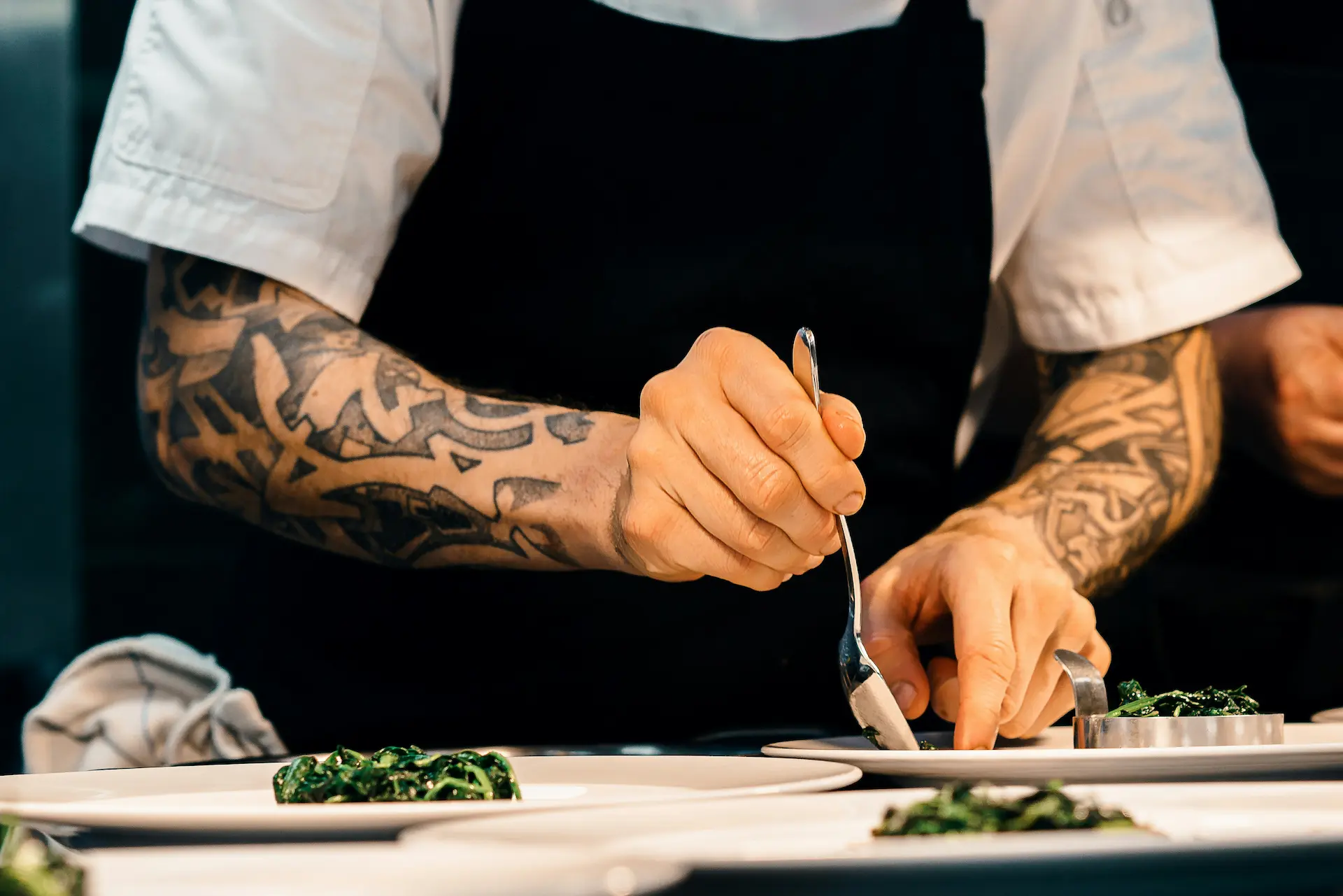
This change in our consumption habits reminds us of a time when, as Alice Dupont, a digital marketing expert, puts it so well: "Before Google, finding a good restaurant was a feat, with guides and recommendations on paper." Today, a click is all it takes to access a wealth of information in the blink of an eye. With Google's new features, such as displaying peak hours, SEO optimization has never been more crucial.
So, let's explore the essential strategies and tools that will allow you to boost your restaurant's visibility, attract new customers, and retain those who have already tasted your delights!
The importance of SEO for restaurants
The highly competitive restaurant industry requires a robust SEO strategy to stand out. Google, as the leading online search engine, offers a multitude of tools for restaurateurs.
"82% of consumers use the 'near me' feature of Google Maps on their mobile phones," says Étienne Rouchet, SEO expert (Source: Zenchef). And that's not all, "84% of mobile 'near me' queries clearly express an intention to consume food" (Source: Zenchef).
Optimizing your SEO means capturing these opportunities and converting searches into visits. The impact is observable: thanks to traffic information, customers can see estimated wait times and average meal durations in restaurants. This feature relies on the geolocation history of former customers who have visited your establishment, thus promoting more flexible visit planning.
Optimizing your Google My Business page
Your Google My Business (GMB) page is the heart of your restaurant's local SEO. Here's how to optimize it effectively:
1. Complete and update your profile
Make sure all your restaurant's information is up to date, including address, opening hours, and phone number. Also add a direct link to your menu and your reservation module.
"A complete listing generates 7 times more clicks on the Google map than an incomplete listing," explains Jean-Yves Delort, a digital marketing consultant. This step ensures that essential information is available at first glance.
2. Active management of reviews
Customer reviews can have a significant impact on the perception of your restaurant and therefore on your SEO. Encourage your satisfied customers to leave positive reviews and respond courteously to negative reviews.
"Excellent customer service starts with listening and responding to feedback, whether it's good or bad," says renowned owner Hélène Martin. Interacting regularly with reviews shows that you value your customers' opinions and are constantly looking to improve your offering.
-> Test our performance calculator to see how it can help you with your referencing and autonomy
3. Quality photos
High-quality photos are essential to make your Google My Business profile more engaging. Aesthetic images of dishes, the restaurant's atmosphere, and even the staff attract attention.
As Marie Dubois, a culinary photographer, points out: "A beautiful photo can seduce the customer before they even walk through your door." Using engaging images helps turn virtual visitors into real customers. You can also use free image banks to visually enrich your profile, while maintaining visual consistency with your establishment.
Using Google to improve customer experience
Google doesn't just stop at reviews and GMB; various features enhance your customers' experience, such as Google Maps, online reservations, and new options for collective planning for a restaurant.
1. Google Maps
Often overlooked, this application is essential. With Google Maps, users can explore local establishments thanks to an exploration tab. Google suggests restaurants based on its algorithms, comments and user reviews. In addition, for the past year, Google Maps has made it possible to know the peak hours in a restaurant, offering Internet users an estimate of the waiting time for each period of the day.
2. Wait times and average meal durations
Google's geolocation allows customers to plan their visits according to peak hours.
"This not only avoids queues, but also maximizes their time more efficiently," says Antoine Boucher, restaurant manager. This tool also allows you to predict the average duration of a meal in your establishment, valuable information for customers in a hurry.
3. Group planning
Google has introduced a new feature for groups of friends wishing to choose a restaurant. Thanks to a shared list on a messaging platform, each member of the group can add their proposed places and vote for their preferences, thus simplifying collective decision-making.
Google and reviews from gastronomic guides
Recently, Google has integrated reviews from the Michelin and Gault&Millau guides into its search results, under the name "Critic Reviews". By combining professional reviews with customer reviews, Google enriches the information base available on each restaurant.
"This new feature is a boon for gourmet restaurants," emphasizes Marc Leonardi, culinary critic. Professional reviews offer an essential perspective and strengthen the credibility of establishments.
Using Google Duplex and Finder
1. Google Duplex
Google's ambition with Duplex is to make this assistant the first to manage reservation calls. Thanks to advanced artificial intelligence, Google Assistant can now handle phone conversations for reservations, providing a seamless experience for both users and restaurateurs.
"It's like having a personal assistant 24/7," says Caroline Lefèvre, owner of "Chez Caro". Currently in pilot phase, this feature is available on Pixel smartphones and for restaurants accepting reservations by phone (Source: Google).
2. Google Finder
The FINDER (Foodborne Illness Detector in Real time) feature developed by Google uses search history and location data to identify if a restaurant has caused food poisoning.
"The goal is to improve hygiene in the restaurant industry," explains Paul Trevers, a food hygiene consultant. This not only alerts health services, but also assures customers of high standards of health and hygiene.
Using Google Calendar to anticipate your day
The daily management of a restaurant requires rigorous organization. Google Calendar is a valuable tool for anticipating tasks and appointments.
"This modern schedule is much more practical than the flying paper schedule," says Sophie Bernard, bistro manager. You can create online calendars for your team, note your appointments with your suppliers or your accountant, and receive reminders to avoid oversights. The Google Calendar tool is integrated with Gmail, Drive, Hangouts and Contacts, making sharing schedules with your team simple and fluid.
Google Alerts to follow industry news
Keeping up with the news in your sector is crucial to stay competitive. Google Alerts allows you to automatically receive information about your restaurant or business sector by email.
"You choose the keywords you want to follow, and the information comes to you," says Pascal Verneuil, a specialist in strategic monitoring. This system also offers the possibility of following culinary trends, news and even competitors.
Using Google drive to organize your documents
Google Drive is a secure solution for centralizing and sharing your files. By using cloud computing, you can store all types of files, assign a private status or share them with your team.
"This allows great flexibility and increased data security," notes Olivia Castelle, project manager. Google Drive also integrates other features such as Gmail and Docs, which simplifies document management in collaborative environments.
External links to improve SEO
In the vast world of SEO, external links play a crucial role in strengthening the credibility and visibility of your restaurant. By integrating relevant resources and establishing connections with other sites, you can significantly boost your SEO.
Integrations and recommended uses:
Google My Business: This is an essential tool for restaurateurs. By optimizing your listing, you ensure active and fluid management of your online presence. Be sure to fill in all the required information, such as your opening hours, address and phone number. By adding appetizing photos of your dishes and your establishment, you can attract the attention of potential customers. Remember to regularly update your profile with posts about your special offers or upcoming events, which will encourage visitors to learn more.
Online Reviews: Customer reviews have a major impact on your online reputation. Ask for feedback from your customers and encourage them to leave reviews on Google. Feel free to respond to these reviews, whether they are positive or negative. A quick and empathetic response shows that you care about the customer experience, which can build trust with future visitors. In addition, a good number of positive reviews can improve your ranking in search results, making your restaurant more visible.










.webp)














.webp)


















.webp)


